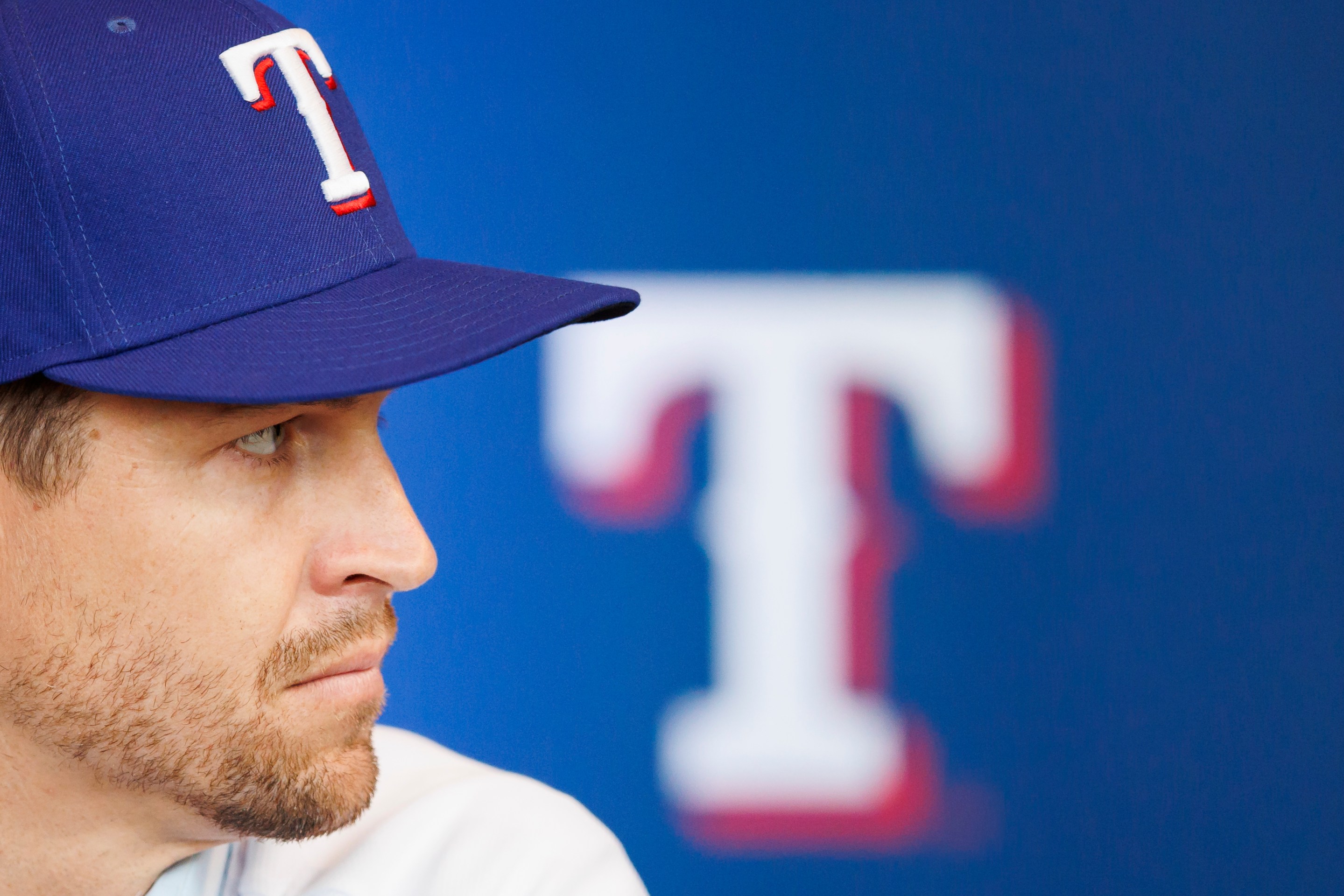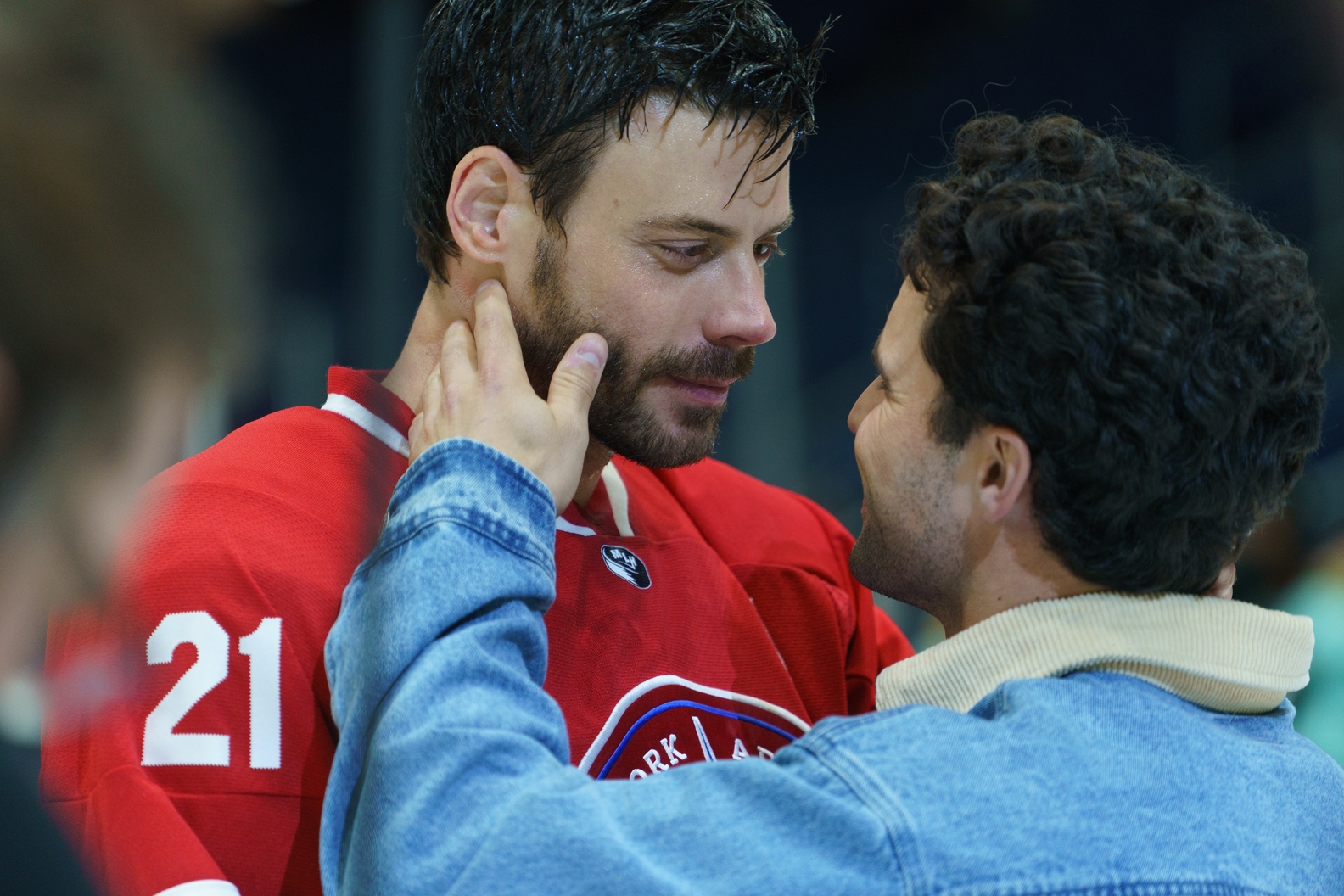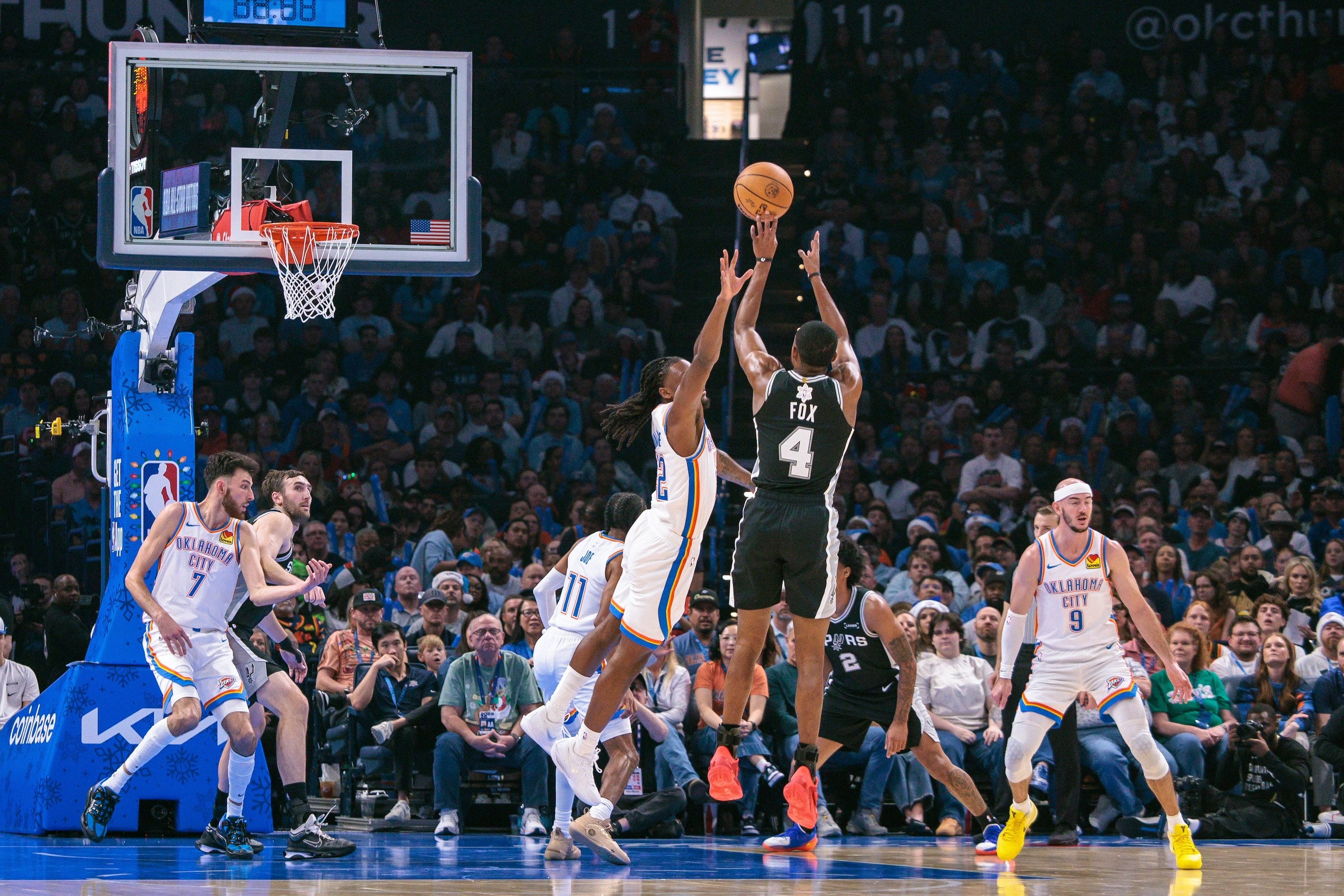When the Texas Rangers signed Jacob deGrom to an incentive-laden free agent deal that would pay him at least $185 million over at least the next five seasons, they knew that he was shrinking. He is notably not declining, neither in the way that pitchers in their mid-30s tend to decline nor by any objective measure. When deGrom has been healthy enough to pitch in recent years, he has been not just the best starting pitcher in baseball, but historically, preposterously dominant. The worrying part is that those seasons have been getting shorter and more fraught, and in such foreboding ways.
This is the broader conceptual challenge that deGrom has represented for years now. He is and has for some time effectively been off the map; at the risk of stating the obvious, when enough about a player is this unprecedented, there isn't any useful precedent to assess him against. In 2021, deGrom put up a 1.08 ERA and a 0.55 WHIP over his first 15 starts, striking out more than 45 percent of the hitters who came to bat against him. Then he didn't throw another big league pitch for more than 12 months. And then he came back and was more or less exactly as dominant—his (astonishing) 1.1 BB/9 and 14.3 K/9 figures were the same in both truncated seasons, and batters swung and missed at 21.1 percent of deGrom's pitches in 2022; no starting pitcher with more than 50 innings of work even topped 17 percent in that category. All of which is to say that figuring out what deGrom might do next season, or in any subsequent season, has as much to do with wishcasting as it does with projection. If you had to take a guess at a starting pitcher who might be worth the kind of contract that deGrom signed, a passably healthy Jacob deGrom would be a fine answer. But it would still very much be a guess.
It's not a completely blind one, though. The Rangers have their own reasons for taking this particular risk, one of which is that their ambitious in-house program to limit injuries among their young pitchers really, really did not work. All those scuppered prospects—at Fox Sports, Jake Mintz noted that of the 22 pitchers that the team drafted in the first five rounds between 2013 and 2020, only five have even pitched in the bigs—meant the organization needed to find starting pitching on the free-agent market if it was going to find it at all. While none of the free agent pitchers that the Rangers brought in share deGrom's towering and harrowing combination of risk and reward, all of them—last year's big acquisition Jonathan Gray and this year's trio of deGrom, Nathan Eovaldi, and Andrew Heaney—have struggled to stay healthy. None made it to 130 innings pitched in 2022, but the team's broader gamble here is easy enough to see. If the Rangers can manage to keep these pitchers healthy next year, or just notably healthier, the rotation should be pretty good. That this statement is somewhere in the neighborhood of saying "if Josh Jung develops the ability to function as a solar panel, the Rangers will have a source of both power and clean, renewable energy on the left side of the infield" doesn't make it less true. It just doesn't make it any easier.
With deGrom, especially, there is a significant mitigating factor. The raw narrative of his last few years is, on its own, not "what you want." There have been injuries that start vague and outwardly minor and then expand to consume whole months without any convincing explanation; there has been serious worry and wear about parts of the body that are either unusual (deGrom lost the first half to an injured scapula in 2022) or vexingly general; there was, for most of deGrom's last two years with the Mets, a persistent and reliably vinegary difference of opinion between the pitcher and his employers regarding not just how injured deGrom actually was, but whether he was injured at all.
All that stuff is linked not just by its obvious ominousness, but by one of the great mitigating factors in all of sports, which is Mets-Related Medical Shit. The confluence of the team's longstanding and self-thwarting institutional hostility towards its best and best-paid players and deGrom's own world-historic personal orneriness often made it very hard to know what was even happening. It is hard to see an angle in Mets President Sandy Alderson going out of the way to clarify that the "elbow inflammation" that kept deGrom out of action in 2021 was in fact a sprained UCL, "the lowest-grade partial tear, if you will"; it is also hard to credit deGrom's claim, days later, that the ligament was "perfectly fine." If the Rangers' thought process in taking a chance on deGrom was weighted heavily towards let's just not do any of that and see how much better things get, it would be hard to blame them. It would be similarly hard to argue if deGrom's thought process in signing with Texas pivoted to some extent on the question, How much worse for my health could literally any other big league organization be?
And now deGrom is where he is, which is both "in the earliest days of Spring Training, in Arizona" and "much richer than before" as well as subject to the unique pressures that his mysterious and tantalizing last few years created. This, or this plus the fact that there isn't any actual baseball to talk about yet, is why there was such an outsized reaction last week when deGrom delayed his first workout due to tightness in his left side. To reiterate, this was deGrom's first workout of the Spring; as Chelsea Janes noted in the Washington Post, "deGrom is not exactly behind schedule because it is hard to be both throwing at all and behind schedule this early in spring training." It was 34 degrees in Arizona, and both the pitcher and the team were being cautious in the way anyone might with such a valuable and volatile bit of human capital, all of which is reasonable and none of which is likely to calm anyone down. "This is the life they will live for now," Janes writes, "spending spring training mornings with eyes locked on deGrom, hoping to see the electric stuff that makes him so dominant when he is right but wondering about every grimace, wince or hesitation."
Meaningful baseball remains far away; baseball that could be described as "game-shaped" even by Spring Training standards is still weeks off. There is, for the time being, quite literally nothing to do but worry. This, too, is what the Rangers signed up for when they brought in Jacob deGrom. From one moment to the next, deGrom pitches at what feels like the furthest limit of possibility. This is not just ball-writer excess on my part, for once—what deGrom does, just as a matter of physical fact, is done at the absolute outer boundary of his body's capacities. He is too stubborn to do it any other way, and this too is not a criticism so much as a statement of fact; he wouldn't be Jacob deGrom if he did anything less, or anything different. It is hard to know what to expect of deGrom, overall, both because the conventional understanding of how players age has changed and because players like deGrom tend to change that sort of understanding. How long even a historically great pitcher can be great, and after what kind of layoff, are previously settled concepts that Justin Verlander, for one, has personally put up for debate.
But it seems safe enough to bet that, whatever it is and however much of it there is, the future for deGrom and his new team will look and feel something like this. What comes next will not be diminishment or decline in the ways fans have grown accustomed to seeing. It will be this kind of ambiguity and this sort of worry, and it will also be the dazzling image of deGrom growing smaller as he makes his way ever further out onto the edge. That's the deal.







